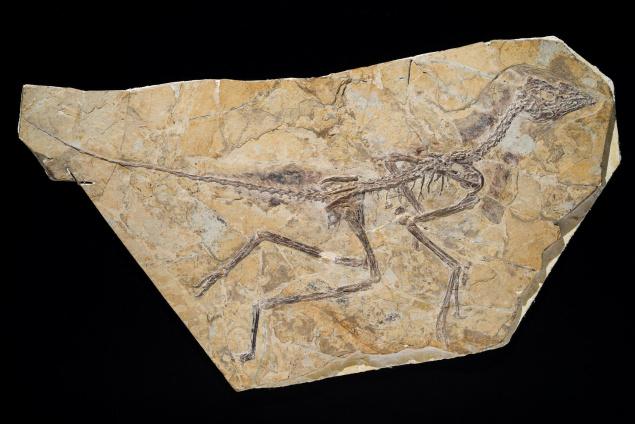Scientists have discovered the fossil of a 60-feet long plant-eating dinosaur in China that lived about 100 million years ago.
A team led by University of Pennsylvania paleontologists has characterised the new dinosaur based on fossil remains found in northwestern China.
The species, a plant-eating sauropod named Yongjinglong datangi, roamed during the Early Cretaceous period, more than 100 million years ago.
This sauropod belonged to a group known as Titanosauria, members of which were among the largest living creatures to ever walk the Earth.
At roughly 50-60 feet long, the Yongjinglong individual discovered was a medium-sized Titanosaur. Anatomical evidence, however, points to it being a juvenile; adults may have been larger.
The finding, reported in the journal PLOS ONE, helps clarify relationships among several sauropod species that have been found in the last few decades in China and elsewhere.

An undated image released by the Royal Belgian Institute of Natural Sciences shows the skeleton of a dinosaur dubbed Aurornis xui that roamed China during the middle to late Jurassic period. File photo
Its features suggest that Yongjinglong is among the most derived, or evolutionarily advanced, of the Titanosaurs yet discovered from Asia.
Until very recently, the U.S. was the epicentre for dinosaur diversity, but China surpassed the U.S. in 2007 in terms of species found, researchers said.
This latest discovery was made in the southeastern Lanzhou-Minhe Basin of China’s Gansu Province.
The remains consisted of three teeth, eight vertebrae, the left shoulder blade, and the right radius and ulna.
The anatomical features of the bones bear some resemblance to another Titanosaur that had been discovered in China in 1929, named Euhelopus zdanskyi.
“The shoulder blade was very long, nearly 2 meters, with sides that were nearly parallel, unlike many other Titanosaurs whose scapulae bow outward,” Doctoral student Liguo Li said.
The scapula was so long that it did not appear to fit in the animal’s body cavity if placed in a horizontal or vertical orientation, as is the case with other dinosaurs.
source “The Hindu”



 January 31st, 2014
January 31st, 2014  Riffin
Riffin  Posted in
Posted in  Tags:
Tags: 